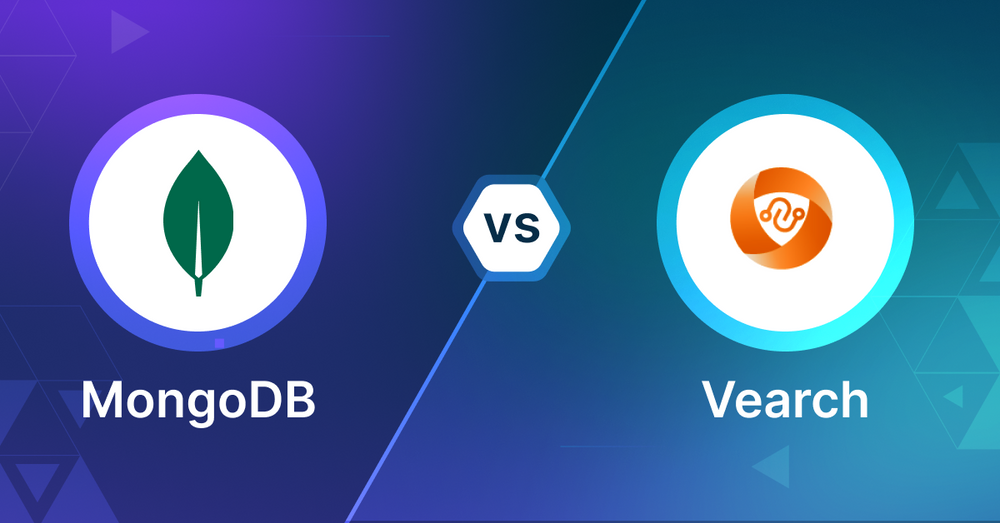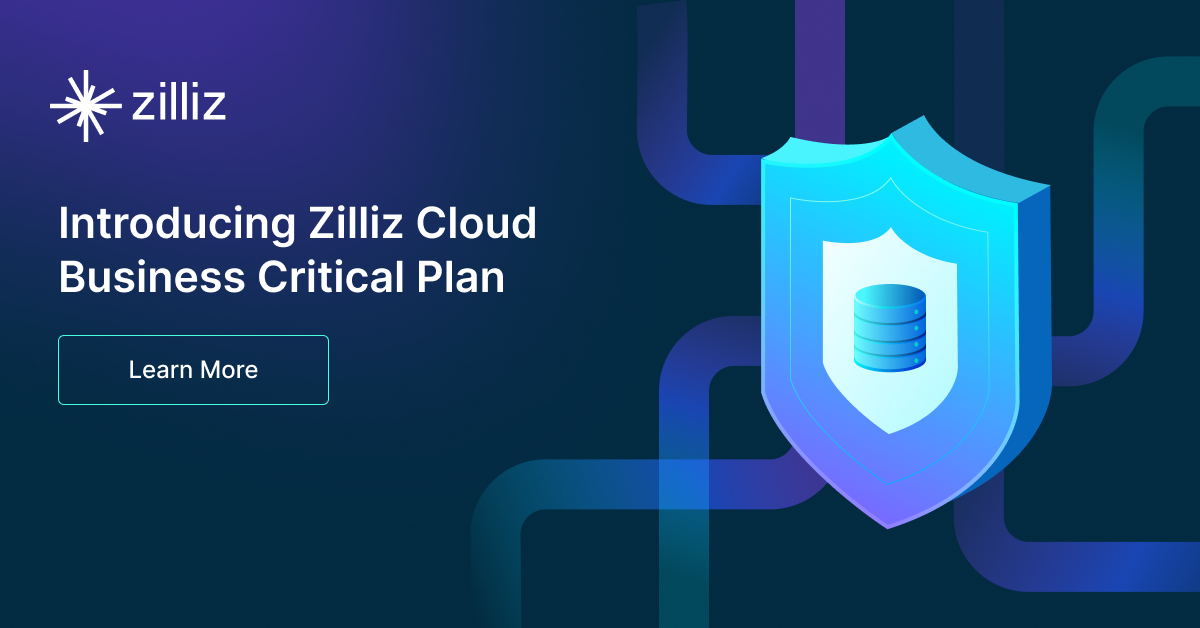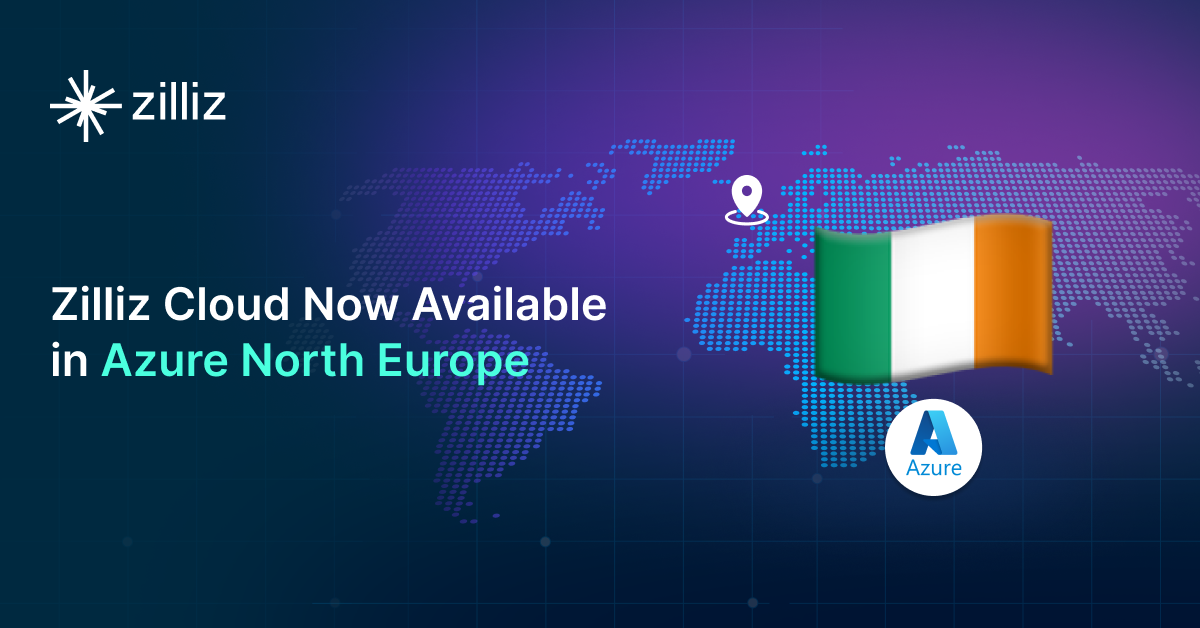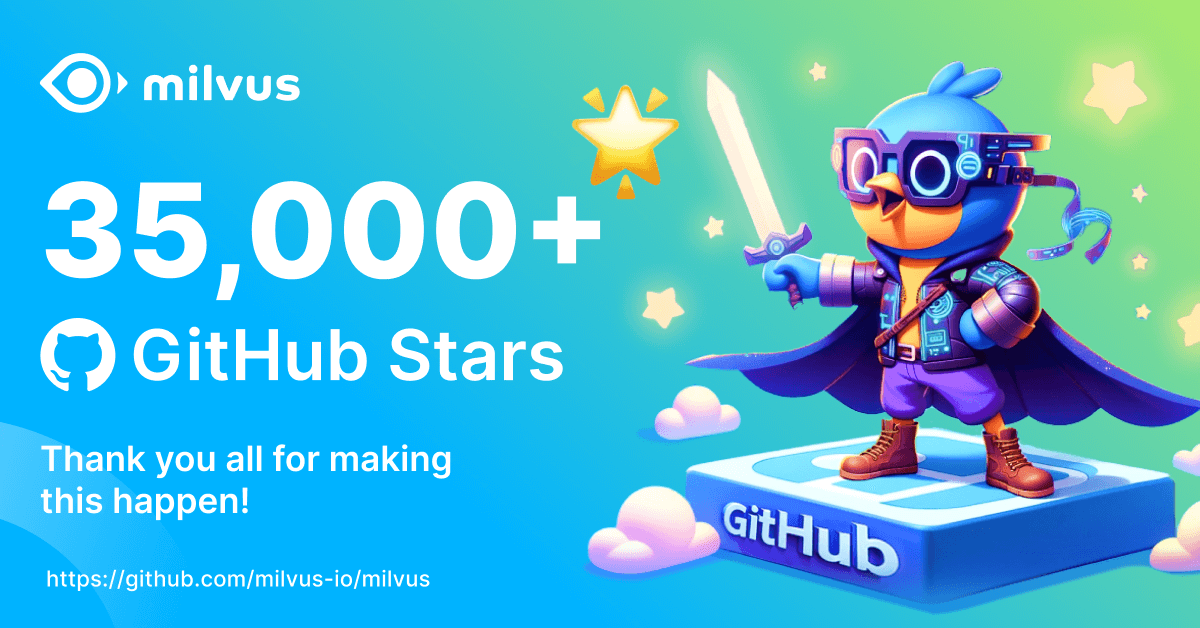MongoDB vs Vearch: Selecting the Right Database for GenAI Applications

As AI-driven applications evolve, the importance of vector search capabilities in supporting these advancements cannot be overstated. This blog post will discuss two prominent databases with vector search capabilities: MongoDB and Vearch. Each provides robust capabilities for handling vector search, an essential feature for applications such as recommendation engines, image retrieval, and semantic search. Our goal is to provide developers and engineers with a clear comparison, aiding in the decision of which database best aligns with their specific requirements.
What is a Vector Database?
Before we compare MongoDB vs Vearch, let's first explore the concept of vector databases.
A vector database is specifically designed to store and query high-dimensional vectors, which are numerical representations of unstructured data. These vectors encode complex information, such as the semantic meaning of text, the visual features of images, or product attributes. By enabling efficient similarity searches, vector databases play a pivotal role in AI applications, allowing for more advanced data analysis and retrieval.
Common use cases for vector databases include e-commerce product recommendations, content discovery platforms, anomaly detection in cybersecurity, medical image analysis, and natural language processing (NLP) tasks. They also play a crucial role in Retrieval Augmented Generation (RAG), a technique that enhances the performance of large language models (LLMs) by providing external knowledge to reduce issues like AI hallucinations.
There are many types of vector databases available in the market, including:
- Purpose-built vector databases such as Milvus, Zilliz Cloud (fully managed Milvus)
- Vector search libraries such as Faiss and Annoy.
- Lightweight vector databases such as Chroma and Milvus Lite.
- Traditional databases with vector search add-ons capable of performing small-scale vector searches.
MongoDB is a NoSQL database with vector search as an add-on. Vearch is a purpose-built vector database. This post compares their vector search capabilities.
MongoDB: The Basics
MongoDB Atlas Vector Search is a feature that allows you to do vector similarity searches on data stored in MongoDB Atlas. You can index and query high-dimensional vector embeddings along with your document data and do AI and machine learning right in the database.
At its core, Atlas Vector Search uses the Hierarchical Navigable Small World (HNSW) algorithm for indexing and searching vector data. This creates a multi-level graph of the vector space so you can do Approximate Nearest Neighbor (ANN) searches. It’s a balance of speed and accuracy for large scale vector search. Atlas Vector Search also supports Exact Nearest Neighbors (ENN) searches which prioritizes accuracy over performance for queries of up to 10,000 documents.
One of the big advantages of Atlas Vector Search is its integration with MongoDB’s flexible document model. You can store vector embeddings along with other document data so you can search more contextually and precisely. You can query any kind of data that can be embedded up to 4096 dimensions. Atlas Vector Search allows you to combine vector similarity searches with traditional document filtering. For example, a semantic search for products could be filtered by category, price range or availability.
Atlas Vector Search also supports hybrid search, combining vector search with full text search for more granular results. This is different from Atlas Search which is focused on keyword based search. The platform integrates with popular AI services and tools so you can use it with embedding models from providers like OpenAI, VoyageAI and many others listed on Hugging Face. It also supports open-source frameworks like LangChain and LlamaIndex for building applications that use Large Language Models (LLMs).
To ensure scalability and performance, MongoDB Atlas provides Search Nodes, which provides dedicated infrastructure for Atlas Search and Vector Search workloads. This allows you to have optimized compute resources and independent scaling of search needs so you get better performance at scale.
By having these capabilities in the MongoDB ecosystem, Atlas Vector Search is a full solution for developers building AI powered applications, recommendation systems or advanced search features. No need for a separate vector database, you can use MongoDB’s scalability and rich features along with vector search.
What is Vearch? The Basic
Vearch is a tool for developers building AI applications that need fast and efficient similarity searches. It’s like a supercharged database, but instead of storing regular data, it’s built to handle those tricky vector embeddings that power a lot of modern AI tech.
One of the coolest things about Vearch is its hybrid search. You can search by vectors (think finding similar images or text) and also filter by regular data like numbers or text. So you can do complex searches like “find products like this one, but only in the electronics category and under $500”. It’s fast too - we’re talking searching on a corpus of millions of vectors in milliseconds.
Vearch is designed to grow with your needs. It uses a cluster setup, like a team of computers working together. You have different types of nodes (master, router and partition server) that handle different jobs, from managing metadata to storing and computing data. This allows Vearch to scale out and be reliable as your data grows. You can add more machines to handle more data or traffic without breaking a sweat.
For developers, Vearch has some nice features that make life easier. You can add data to your index in real-time so your search results are always up-to-date. It supports multiple vector fields in a single document which is handy for complex data. There’s also a Python SDK for quick development and testing. Vearch is flexible with indexing methods (IVFPQ and HNSW) and supports both CPU and GPU versions so you can optimise for your specific hardware and use case. Whether you’re building a recommendation system, similar image search or any AI app that needs fast similarity matching, Vearch gives you the tools to make it happen efficiently.
Key Differences
When you’re building AI applications that need vector search, two tools come to mind: MongoDB Atlas Vector Search and Vearch. Both are powerful but have some key differences that will impact your decision. Let’s break down how these tools compare across several key areas.
Search Methodology
MongoDB Atlas Vector Search uses the Hierarchical Navigable Small World (HNSW) algorithm for indexing and searching vector data. It creates a multi-level graph of the vector space for Approximate Nearest Neighbor (ANN) searches. It also supports Exact Nearest Neighbors (ENN) searches for smaller datasets.
Vearch, on the other hand, offers flexibility in indexing methods. It supports both IVFPQ and HNSW algorithms so you have more options to optimize for your use case.
Data
MongoDB Atlas Vector Search excels at its integration with the MongoDB document model. You can store vector embeddings alongside other document data, so you can search with more context and precision. This is particularly useful for applications that need to combine vector similarity searches with document filtering.
Vearch also supports hybrid search, so you can search by vectors and filter by regular data. It can handle multiple vector fields in a single document which is useful for complex data structures.
Scalability and Performance
MongoDB Atlas has dedicated Search Nodes for Vector Search workloads so you can scale search independently. This means better performance at scale especially for large datasets.
Vearch has a cluster setup with different types of nodes (master, router, and partition server) handling different tasks. This architecture allows Vearch to scale out as your data grows and you can add more machines to handle more data or traffic.
Flexibility and Customization
MongoDB Atlas Vector Search can query any data that can be embedded up to 4096 dimensions. It also supports combining vector similarity searches with document filtering and full-text search.
Vearch offers flexibility in indexing methods and supports both CPU and GPU versions so you can optimize for your hardware and use case.
Integration and Ecosystem
MongoDB Atlas Vector Search integrates with popular AI services and tools. It works with embedding models from OpenAI and VoyageAI and supports LangChain and LlamaIndex for building applications with Large Language Models (LLMs).
Vearch has a Python SDK for quick development and testing but no information on its integration with other AI tools or frameworks in this context.
Ease of Use
MongoDB Atlas Vector Search benefits from being part of the MongoDB ecosystem, which many developers are already familiar with, so that could lower the learning curve for teams already using MongoDB.
Vearch has real-time indexing and a Python SDK which makes development and testing easier, but its distributed architecture requires more setup and maintenance knowledge.
Cost
MongoDB Atlas is a managed service so it simplifies operations but might cost more depending on your usage.
Vearch is open source, so can reduce direct costs but more investment in infrastructure and management.
Security
MongoDB Atlas likely has MongoDB's robust security features including encryption, authentication and access control.
Vearch’s security is up to you.
When to use MongoDB Atlas Vector Search
Use MongoDB Atlas Vector Search when you have complex, document-based data that needs both traditional querying and vector search. It’s perfect for applications that need to combine vector similarity searches with document filtering, like advanced product recommendation systems or content discovery platforms. If you’re already using MongoDB for your data and want to add AI powered search without introducing a separate vector database, Atlas Vector Search is a seamless integration. It’s also a good fit for projects that need tight integration with popular AI services and tools as it supports embedding models from various providers and works well with LangChain and LlamaIndex.
When to use Vearch
Vearch is good when you need more control over the indexing methods and hardware optimization. It’s perfect for projects that need real-time indexing and can handle multiple vector fields in a single document. If you’re building an application that needs to scale out to handle massive amounts of vector data, Vearch’s cluster based architecture might be a good fit. It’s also good for developers who want the flexibility to choose between CPU and GPU implementations based on their hardware setup. Vearch might also be the better option for teams that prefer open-source solutions and want more control over their vector search infrastructure.
Summary
Both MongoDB Atlas Vector Search and Vearch are great vector search solutions but for different needs. MongoDB Atlas Vector Search is good for integrating vector search with document based data and is a managed service within the MongoDB ecosystem. Vearch is good for flexibility in indexing methods, hardware optimization and scalable architecture. Your choice between these two should be based on your use case, existing infrastructure, performance requirements and team expertise. Consider data complexity, scaling needs, integration requirements and whether you want a managed service or an open-source solution that you can customize heavily.
Read this to get an overview of MongoDB and Vearch but to evaluate these you need to evaluate based on your use case. One tool that can help with that is VectorDBBench, an open-source benchmarking tool for vector database comparison. In the end, thorough benchmarking with your own datasets and query patterns will be key to making a decision between these two powerful but different approaches to vector search in distributed database systems.
Using Open-source VectorDBBench to Evaluate and Compare Vector Databases on Your Own
VectorDBBench is an open-source benchmarking tool for users who need high-performance data storage and retrieval systems, especially vector databases. This tool allows users to test and compare different vector database systems like Milvus and Zilliz Cloud (the managed Milvus) using their own datasets and find the one that fits their use cases. With VectorDBBench, users can make decisions based on actual vector database performance rather than marketing claims or hearsay.
VectorDBBench is written in Python and licensed under the MIT open-source license, meaning anyone can freely use, modify, and distribute it. The tool is actively maintained by a community of developers committed to improving its features and performance.
Download VectorDBBench from its GitHub repository to reproduce our benchmark results or obtain performance results on your own datasets.
Take a quick look at the performance of mainstream vector databases on the VectorDBBench Leaderboard.
Read the following blogs to learn more about vector database evaluation.
Further Resources about VectorDB, GenAI, and ML
- What is a Vector Database?
- MongoDB: The Basics
- What is Vearch**? The Basic**
- Key Differences
- When to use MongoDB Atlas Vector Search
- When to use Vearch
- Summary
- Using Open-source VectorDBBench to Evaluate and Compare Vector Databases on Your Own
- Further Resources about VectorDB, GenAI, and ML
Content
Start Free, Scale Easily
Try the fully-managed vector database built for your GenAI applications.
Try Zilliz Cloud for FreeKeep Reading

Introducing Business Critical Plan: Enterprise-Grade Security and Compliance for Mission-Critical AI Applications
Discover Zilliz Cloud’s Business Critical Plan—offering advanced security, compliance, and uptime for mission-critical AI and vector database workloads.

Zilliz Cloud Now Available in Azure North Europe: Bringing AI-Powered Vector Search Closer to European Customers
The addition of the Azure North Europe (Ireland) region further expands our global footprint to better serve our European customers.

Our Journey to 35K+ GitHub Stars: The Real Story of Building Milvus from Scratch
Join us in celebrating Milvus, the vector database that hit 35.5K stars on GitHub. Discover our story and how we’re making AI solutions easier for developers.
The Definitive Guide to Choosing a Vector Database
Overwhelmed by all the options? Learn key features to look for & how to evaluate with your own data. Choose with confidence.